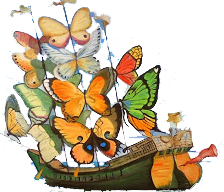Public means of transportation
3nd Grade geography: chapter 3
Public means of transportation (Greek educational system)
|
|
Materials for the lessonCones (material from gym class)
|
Layout of the classroomThe desks – chairs must be moved by the walls of the classroom. We need free space. |
|
Phase 1At the first phase, the lesson takes place in the classroom in a traditional way. The teacher gives the first knowledge and information about the capitals of countries.Then, the teacher sticks the large paper on the floor on which he has drawn a huge map of Greece and has put the name of 5 capitals (for example Patra, Santorini, Athens, Thessaloniki , Rodos). There are 5 stations. Then the teacher sticks a poster of Summer Epidaurus Festival.The Teacher divides students in groups of four and elaborates the drama actions.Firstly, each group should move from a capital to Epidaurus as a visitor to the festival by using different means of transportation (car, boat, airplane, train and bus). Each group will stand on a station (capital), the cones are stations. These students will take the travel options from a group who is responsible for the information about the forms of transportation (they work as the secretarial) and they must observe the passengers.Teacher explains the details about this freestyle performance and becomes a traveler of education adventure and he is the person who encourages the children in whole process. |
|
|
|
|
Phase 2Teacher’s bell rings and the first group starts the trip. Each group after getting the necessary information decides what means of transport it will use. Then they will improvise their journey on an airplane or on a ship or in a train or on a bus. These are the real passengers who enjoy their trip either on the sea or on the land or in the air with an amazing summer weather. The children make slight noises like a real airplane or ship etc.Teacher’s bell rings again and action freezes. A secretarial works (for example observes and checks if passengers have correctly used the means of transportation). At the end of the theatrical play they can identify mistakes.Teacher’s bell rings again and the second group starts moving again towards the secretarial from the second station. The second group decides how they want to travel and the journey begins.Teacher’s bell rings again and actions freezes. A secretarial works on a new group and they must observe again the new trip.The same action continues until all groups have finished their travels. The secretarial will present the right choices and the wrong choices.At this point, the teacher will present how students should be consulted on a map of a particular area about the terms of public transport services |
|
Phase 3In the 3rd phase the teacher introduces the new condition and at this point the travelers have to study carefully the map of an area where they start and then improvise their journey. The secretarial does not exist.Teacher’s bell rings again and the first group starts the trip, in the same way.In addition, the teacher changes the areas which he had set in phase 2, so the students are forced to study the new areas carefully. Also, the teacher changes its destination, for example, it can be the international exhibition of Thessaloniki. The teacher asks from passengers to take pleasure and fun from this procedure and asks students to play this scene as flashback from real experience, to portray this role as the better as they can. |
|
Phase 4In the end, all stand in a circle and present possible questions, express their feelings during actions. They all share the difficulties and the importance of how to study the map of a region in order to travel. This phase is also necessary for the teacher to receive feedback and to design similar actions. |


 SmartOWL
SmartOWL